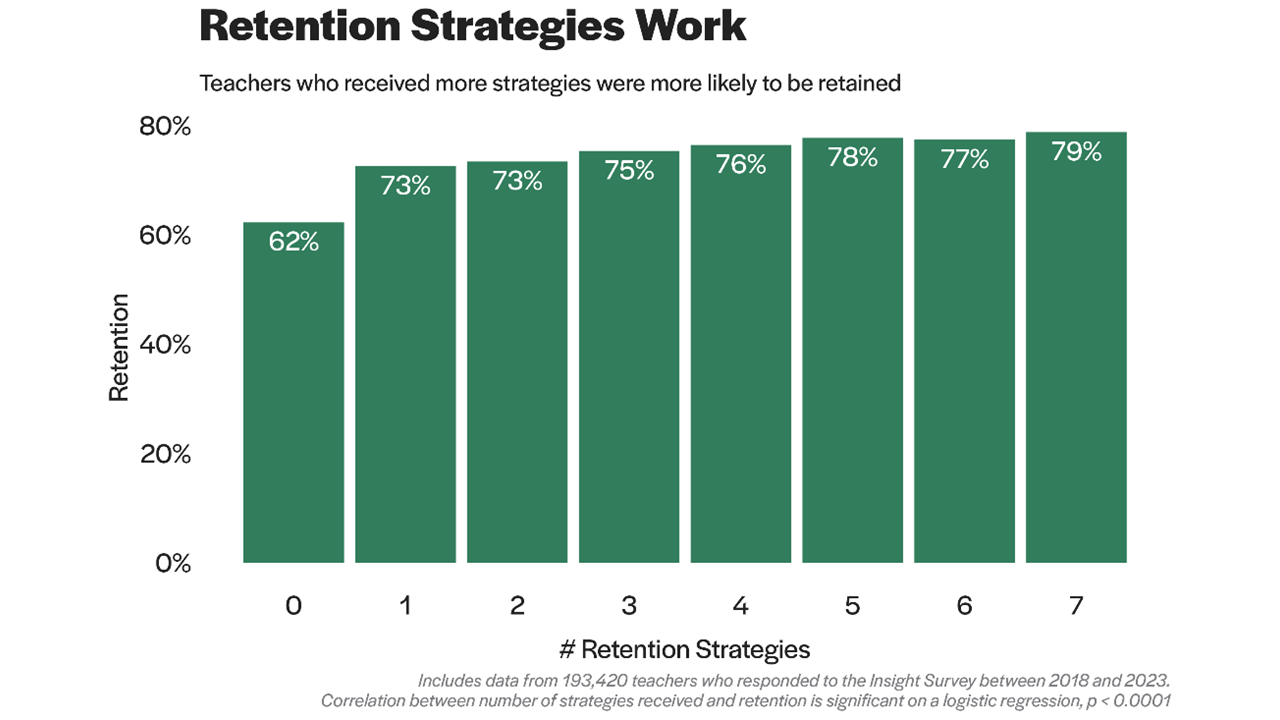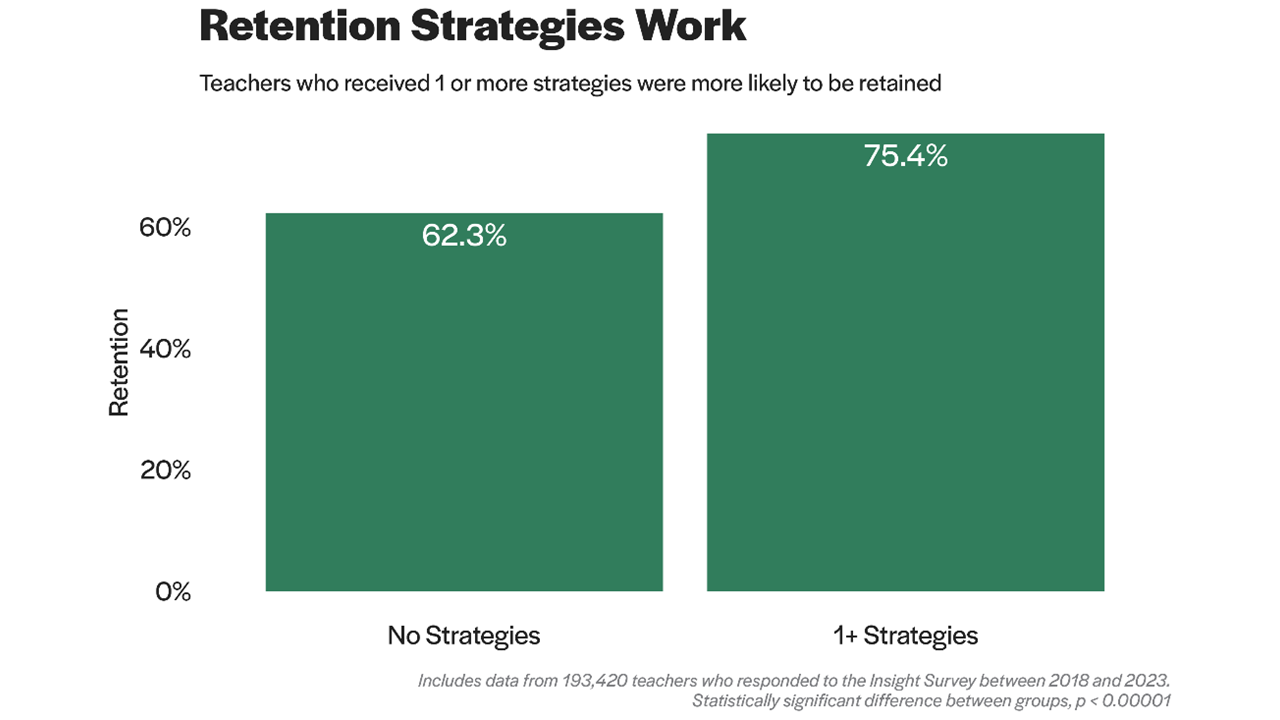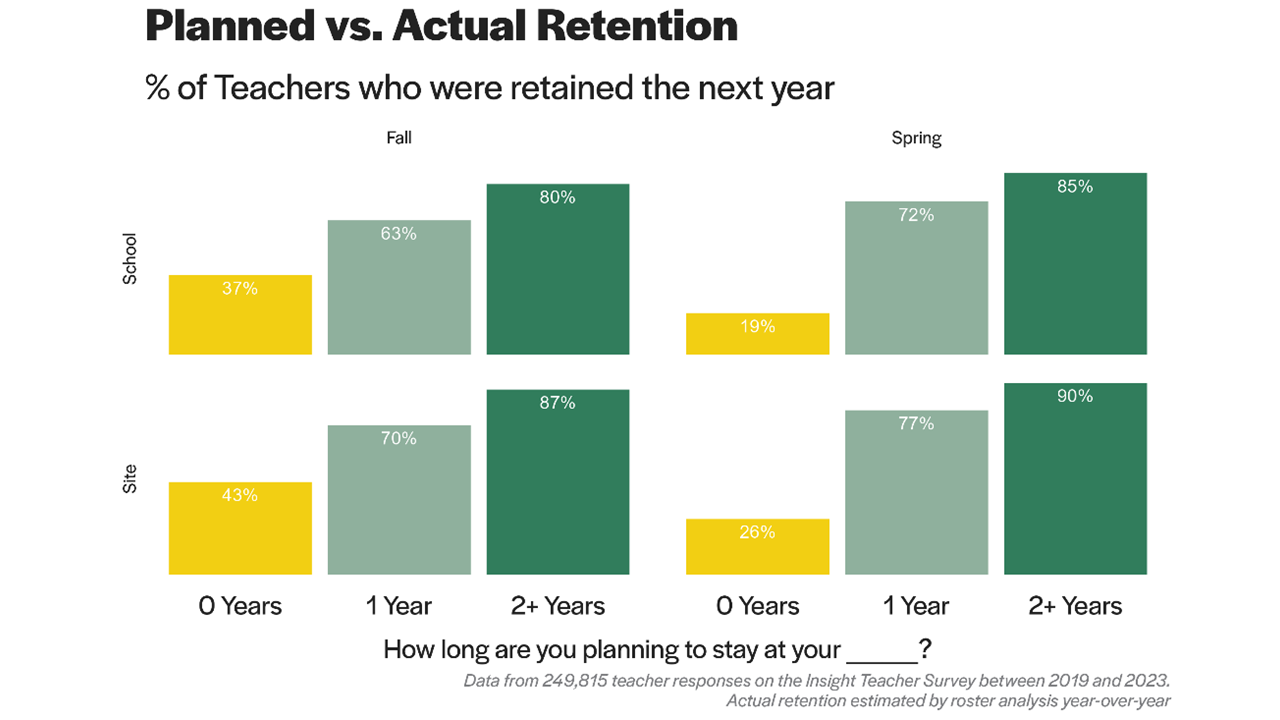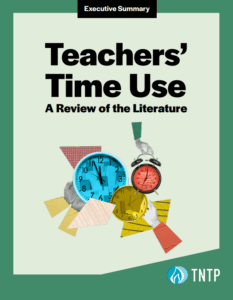As schools struggle to recover from the pandemic, they grapple not only with helping students catch up academically but also challenges with teacher pipelines, limited budgets, and a rapidly changing teacher workforce. Now more than ever, it’s important to retain good teachers in our schools. When an effective teacher leaves, it means investing time and effort into finding replacements with no guarantee they’ll be equally effective. Yet too often these teachers leave not because of pay or major structural challenges, but simply because no one took the time to ask them to stay.
In 2012, TNTP released The Irreplaceables report, which highlighted how school leaders often missed opportunities to retain high-performing teachers and recommended low-cost strategies for developing and retaining those teachers. Following the report’s release, TNTP developed the service that has become the Instructional Culture Insight Surveys, which capture perception data from teachers and other stakeholders to inform efforts to create a safe and collaborative school environment that provides every young person with a strong academic foundation. Administered to more than 220,000 teachers since Insight’s inception, these surveys ask about their school experiences, including whether they’ve experienced the retention strategies named in the report and their anticipated tenure at their current school, district or network. After over a decade of surveying teachers, we took a closer look at our dataset to assess the ongoing impact of these strategies on teacher retention across the country.
Since approximately 82% of our clients renew their TNTP Insight contracts annually, in addition to looking at how long teachers said they planned to stay, we could estimate actual retention through year-over-year teacher rosters. While we had to decide which schools to include in the analysis and the method clearly has some limitations (e.g., teachers may have changed their names or been promoted into a leadership position within the same school.), it provided a starting point in evaluating the impact of retention strategies on whether teachers would return to teach the following year.*
Making an effort to retain teachers still makes a difference.
Teacher turnover is a real issue for schools nationwide, but all hope is not lost. Our research shows that simple retention strategies—like a school leader explicitly encouraging a teacher to stay—can make a measurable difference in teachers returning to their schools for the following year. When school leaders implement targeted retention strategies, it impacts teachers’ perceptions and actual retention rates. The most significant jump in retention rates occurs when moving from no strategies to just one strategy, boosting retention from 62 percent to 73 percent.

Leaving teacher retention up to chance is a recipe for losing teachers. Statistically, there was a significant difference in the retention rates of teachers who didn’t experience any retention strategies and those who experienced at least one.

Efforts to retain effective teachers don’t have to be expensive or difficult. The three strategies in the Insight teacher survey that showed the strongest correlation with teacher retention were:
- Provided me with regular, positive feedback
- Informed me that I am high-performing
- Encouraged me to continue teaching at my school next year
Taking the time to acknowledge and appreciate great teachers can genuinely influence their willingness to return for another year. It’s never too late! TNTP’s Instructional Culture Insight team administers surveys in both fall and spring. We’ve discovered that teachers’ intentions in fall can change by spring, and even their spring plans aren’t set in stone. Among those surveyed in fall who planned to leave their school at the end of the year, 37% returned the following year. However, of those surveyed in the spring with similar intentions, only 19% returned the next year. Our analysis also revealed that teachers’ stated plans to return to their school the following year were approximately 75% accurate in the fall and 83% accurate in the spring.

Why administer TNTP’s Insight survey when you can ask teachers directly? TNTP uses an aggregate reporting model and ensures confidentiality, so teachers are more likely to be transparent about their plans. You’ll also have a better sense of teacher retention alongside information about the teacher experience—from positive feedback and encouragement to peer culture and professional development. The Insight teacher survey has been independently validated by the American Institutes for Research and RAND as a predictive measure of student achievement and teacher retention. TNTP compiles survey results into dynamic dashboards that provide leaders with access to their data in a digestible, actionable format with nationally normed domains and national benchmarks. Instructional Culture Insight surveys are now also available for school support staff, school leaders, families, students, and central teams staff.
Do you know how many of your teachers plan to return next year? Administering TNTP’s Instructional Culture Insight teacher survey can give you a window into your teachers’ plans, allowing you to better plan for the following year. Visit our Instructional Culture Insight Surveys page to learn more about bringing this valuable service to your district or network.
—
* In order to be included in the dataset for analysis, a school needed to have a teacher roster two years in a row, have the same email domain both years (except in specific cases where we knew of and could account for site-wide email changes), have a similar average length and number of digits in email names, and have a roster at least 60% the size of the previous year’s roster. We wanted to avoid a large underestimation of retention for schools where teachers’ emails didn’t show up the next year solely because of a change to email formats across the school or district/network. We also limited our analysis to the 2018-19 school year and later due to differences in how data were tracked prior to that year.








